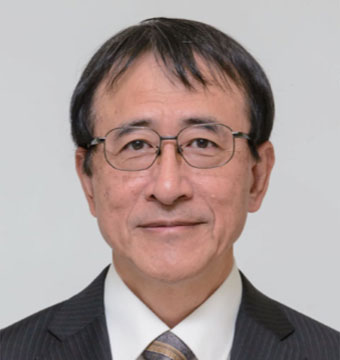Honorary Member

Dr. Hiroshi Murase graduated from the Faculty of Engineering at Nagoya University in 1978 and completed his master’s course at the same university in 1980, whereupon he joined Nippon Telegraph and Telephone Public Corporation (now NTT). He received a Ph.D. in engineering with his dissertation, “Research on Online Recognition of Hand-written Characters and Figures,” in 1987. From 2001 to 2003, he was executive manager of the Media Information Laboratory, NTT Communication Science Laboratories. From 2003 to 2017, he was a professor at the Graduate School of Information Science at Nagoya University. Since 2017, he has been a professor at the Graduate School of Informatics at Nagoya University.
Throughout these periods, Dr. Murase has been engaged in research and education in pattern recognition, computer vision, and their applications, thereby making significant contributions to the advancement of these fields. While he was a visiting research scientist at the Computer Science Department at Columbia University in the U.S. for one year, from 1992 to 1993, he developed a precursor of a method for recognizing 3D objects based on machine learning, called the “parametric eigenspace method,” a method for recognizing 3D objects based on machine learning. In 1994, his paper on the research that used this method received the Best Paper Award at CVPR, one of the international conferences boasting a high h-index with the IEEE. In addition, a series of his papers on this research has been cited more than 7,000 times. Thus, his research is globally recognized as having a high impact.
After he returned to Japan, he undertook research and development into technology for pattern recognition of time-series signals, such as video and audio. He developed a technology called the “active search method,” which compresses audio and video signals and performs high-speed matching. This technology plays an important role as the basic technology for a song search service that he developed with Sony Corporation, and also as a technology for automatically checking whether commercials are indeed inserted into TV broadcasts, and as a technology for copyright management of audio and video data.
Since moving to Nagoya University, he has continued basic research into pattern recognition and computer vision. He has also undertaken research and development aimed at commercial applications, such as person recognition using a monitor camera, and understanding of the environment for automated driving and the intelligent transport systems (ITS). In 2013, as part of work on the latter, he devoted himself to creating the Nagoya Chapter of the IEEE ITSS and served as its first chair. At Nagoya University COI Mobility Innovation Center, he is an R&D leader in environment understanding, which plays an important role in automated driving, and has produced many results through collaboration with a large number of enterprises.
In recognition of these achievements, Dr. Murase has been designated as a fellow not only by the IEICE but also by the IEEE and the Information Processing Society of Japan. He has received many accolades, including the Minster’s Award from the Ministry of Education, Culture, Sports, Science and Technology, the Hisoka Maejima Award, the Medal with Purple Ribbon, and numerous best paper awards from the IEICE and international conferences. He has made significant contributions to the development of the pattern recognition and computer vision research communities by serving as director of IAPR, and chair of executive committees for both domestic and international conferences.
Within the IEICE, he served as chair of the Technical Committee on Pattern Recognition and Media Understanding, its advisor, director of the IEICE, and president of the Information and Systems Society, and received the Distinguished Achievement and Contributions Award in 2018.
As described above, Dr. Murase has demonstrated strong leadership as a trailblazer in the fields of pattern recognition and computer vision in Japan. His contributions to the development of the electronic, information and communication field and the application of the technologies in these fields to the industrial world have been outstanding. Therefore, we recommend that he be designated as a fellow, honorary member of the IEICE.